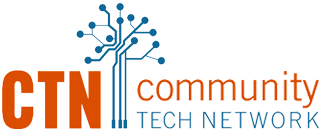Just two months into 2023, Community Tech Network has been able to start the year strong. We are building relationships with new partners and continuing to work alongside our current ones to advance the fight for digital equity. We’re honored to have your support, and we’re excited to share some of our recent updates with you.
COMMUNITY TECH NETWORK SPOTLIGHT

BEN BOONE: PREDICTING AND BUDGETING FOR CTN’S GROWTH
STAY INFORMED
- What Is Digital Redlining and How Does It Perpetuate Poverty? Internet service providers, or ISPs, often intentionally underinvest in low-income, minority communities, assuming that they will earn larger profits in wealthier neighborhoods that lack diversity. In such cases, low-income areas have less digital infrastructure and slower internet speeds, but residents often pay the same price for internet services. This discriminatory practice is known as digital redlining. Read our blog to learn more about digital redlining, how it prevents upward economic mobility, and what can be done to address the issue.
- Digital Mythbusting: Why Smartphones Are Not Enough to Bridge the Digital Divide. Imagine that you’re a high school student writing a 10-page essay on your phone. How difficult is it to switch between all the tabs on your browser that contain your research? How long will it take you to type all of the content using your phone’s little keyboard? Some 15% of Americans are smartphone dependent, meaning that they do not have reliable home internet to supplement their cell phone coverage. In our blog post, the first installation in a digital myth busting series, learn why this is a problem.



Comments are closed.